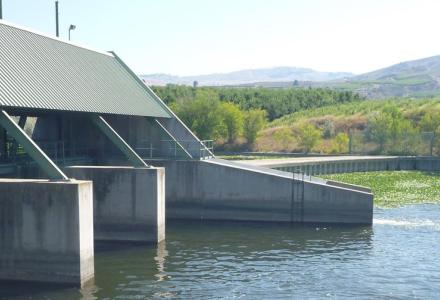Large fluctuations in water levels are part of the Great Lakes’ natural cycle. Levels have been historically high in recent years but were extremely low less than a decade ago. Scientists are working to understand how climate change may dictate the severity, length and frequency of extreme lake level events.
As those who live and work along the Great Lakes continue to experience the extensive impacts of extreme conditions driven by climate change, it is critical to understand the changes that are happening in the basin to prepare for the future.

At this year’s International Association for Great Lakes Research (IAGLR) virtual conference, Dr. Andrew Gronewold, associate professor at the University of Michigan’s School for Environment and Sustainability, provided an overview of the factors affecting Great Lakes levels and gave his view on what research priorities can lead to a deeper understanding of how climate change is affecting the hydrology of the Great Lakes.
The immense size and complexity of the Great Lakes system presents challenges in predicting and modelling the water balance on each of the lakes from year to year, said Gronewold, also a member of the IJC’s Science Advisory Board.
Key Factors
There are three key factors at play in determining the net amount of water entering each of the lakes: runoff from overland precipitation, over-lake precipitation and evaporation directly from the lakes.
The Great Lakes are exceptional in that their vast surface area accumulates more water from over-lake precipitation than from runoff. Evaporation directly off the lakes accounts for a much greater loss of water than evapotranspiration (evaporation from land). This makes the Great Lakes very sensitive to weather conditions over the basin.
Several continental air masses determine the weather over the Great Lakes basin, and climate change seems to be increasing the influence of certain air masses on weather in the basin, often bringing with them warmer and wetter conditions.
Anomalies, such as the effect of the strong polar vortex in 2014, also can cause abrupt changes to weather across the basin. Modelling and forecasting how these air masses behave is a challenge for scientists. Gronewold says further research on developing accurate models and datasets to forecast the behavior of air masses around the Great Lakes will help us understand the resulting changes in weather in the basin.
Historical records since 1860 show that water levels on the lakes were influenced largely by the amount of precipitation in the basin. In the 1970s, there was a shift toward elevated precipitation in the basin, which would logically result in increased water levels. However, in the past 15 years, records also show that evaporation increased considerably in correlation with increased temperatures in the basin. So there are competing ways in which climate change is affecting water levels: through increased precipitation and warmer weather driving up evaporation.

Scientists are still unsure what this means for the Great Lakes. An oft-cited 2010 study published in the Journal of Great Lakes Research pointed toward decreasing Great Lakes levels in the future due to increased evaporation and evapotranspiration from hotter weather.
Since then, studies using state-of-the-art modelling have found disparate results leading to a lack of consensus among scientists as to how climate change will affect lake levels. Gronewold argues that continuing this type of research is critical to developing more accurate water level forecasting in the future.
More Monitoring
In terms of other key research needs, Gronewold highlighted the importance of continuing the work of the Great Lakes Evaporation Network’s monitoring program to track how evaporation is changing in response to higher temperatures.
He also pointed to the need to expand weather monitoring to a basinwide scale, which is challenging due to the Great Lakes being shared between Canada and the United States. Federal agencies that monitor weather in the basin could increase their ability to predict changes to water levels with greater awareness of what is happening north and south of the border, Gronewold says.
He advises decision makers to consider their responses to extreme water level conditions on a longer timescale. Decisions made in response to extreme water levels could have lasting effects in the future, and given the uncertainty of how climate change may affect the hydrology of the lakes over time, we must be cautious in implementing short-term solutions.

Christina Chiasson is a policy analyst for the Canadian Section of the IJC in Ottawa, Ontario.



